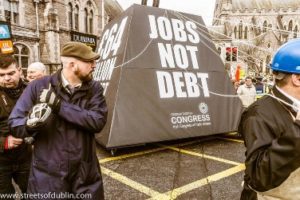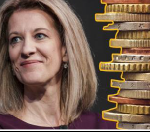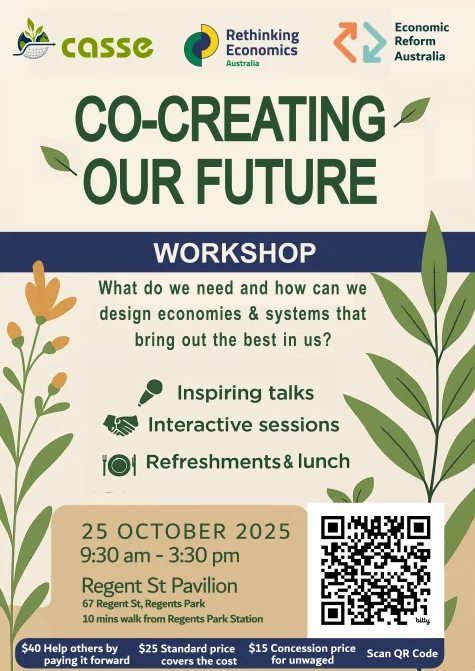Is a different type of economics the answer?
A paradigm shift is underway in economics – Steven Hail

The media as a whole is catching on to the fact that there is a paradigm shift underway in economics.
This won’t be a surprise to you if you have been reading my articles. I have written about two dozen articles on the main challenger to the old paradigm, which is now called Modern Monetary Theory (MMT), and others have also written on this topic. If you have been relying for your news and your current affairs on the usual suspects, how- ever, then the current controversy might have crept up on you.
For the most part, mainstream media have been asleep on this one, even if they are latterly waking up.
There have been increasing mentions of MMT in mainstream media, and an increasing number of whole articles which are partly, if not entirely, supportive of this new frame for thinking about the economy and the role of the federal government within the economy. MMT proposes that the constraint applying to federal government spending shouldn’t be debt but inflation, that is, how much new money can be pumped into the economy before prices begin to rise.
Why the sudden interest? It is becoming clear to all but the most blinkered that what was for many years the near- consensus view on the best way of managing the economy is broken. It certainly doesn’t work any longer and perhaps it could only ever work for a while because it depended on things which are unsustainable. And what is unsustainable, naturally, tends not to be sustained.
The old consensus was that the economy should be managed by a central bank, independently of politics, controlling interest rates to keep inflation on target and stop the economy hitting the rocks. The important thing for the government to do was to balance its budget, at least on average over time.
To do otherwise was to risk either sky- high interest rates, sky-high inflation, or both. All you needed to do was to add the neoliberal propaganda about how low taxes are important for incentives and productivity growth. Then you had constructed an argument for government spending cuts, the privatisation of anything and everything that could possibly be privatised, all the “grey corruption” described so well in books like Banking Bad and Game of Mates, and all the trickle-down economics nonsense that goes with it.
In Australia it wasn’t only the Coalition parties that bought enthusiastically into this narrative. It was the Labor Party as well, which abandoned full employment, privatised with gusto, deregulated the banks and set up a tax-advantaged private superannuation system – so that its rorts were inevitable.
And now, finally, we can see all this disintegrating. The result is almost a world-record level of household debt held in Australia, a still-fragile property market, an unacceptably high level of inequality, politicians who think they cannot afford to raise Newstart to a civilised minimum, and interest rates on their way to zero.
And for what reason? Zero interest rates won’t do much to help. We have so much household debt, we surely don’t want to take on more and we certainly shouldn’t be piling more debt onto households. Businesses are not so heavily into debt, but why should they borrow to invest when there are not enough customers with money to justify their investments?
If you have a mortgage, an interest rate cut might help you, but it will hurt someone with term deposits, and if you spend more, they may spend less. And everyone knows interest rate cuts are a panic measure that not even the RBA (Reserve Bank of Australia) now believes in. The RBA itself has been talking about euro-zone style quantitative easing, even though all serious commentators know that doesn’t work either.
What does work is fiscal policy, as MMT advocates have been saying for years. If you want to hold the economy at or close to full employment, without high private sector debt pushing the financial system towards a fragile state; if you want people to be able to spend out of their wages, rather than on the credit card; if you want decent public services as well as efficient, green public infrastructure, you have to use fiscal policy.
And in an environment where the private sector needs to add to its saving, and when the rest of the world is not going to provide enough support for sustainable prosperity within Australia through its demand for our exports, the government must net spend enough.
Most governments, for most of the time, have run budget deficits in the past. In the absence of a persistent surplus on the current account of the nation’s balance of payments, economic growth without government deficits is simply unsustainable. It drives the private sector into debt. A government surplus is a private deficit and it weakens the financial system and the economy. A government deficit is a private sector surplus, and it supports the economy and strong private balance sheets.
Deficits don’t drive interest rates up if you are a monetary sovereign. The monetary sovereigns issue their own currencies and set their own interest rates. The cash rate within Australia is set by the RBA. Interest rates applying to government debt depend on what investors expect the RBA to do with the cash rate over time. The RBA could directly set those rates too, if it wished, as the Japanese central bank has done with ten-year interest rates on government debt since 2016. They have been set at zero. The official short-term rate has been negative.
And fiscal deficits are only inflationary if they contribute towards spending which pushes the overall economy towards its productive capacity. The question is how to ensure that a form of full employment can be delivered without overheating the economy. And one idea that is gaining ground now is to introduce a federal job guarantee.
The important thing to note though is that the old system is broken. Though we may be at least 18 months away from everyone being aware of this.
People will also become aware that the federal government budget and the appropriate use of fiscal deficits will take over as the dominant mechanism for managing federal government spending, employment and sustainable economic development.
For my part, I am doing my best to help the transition on its way. This includes, with the assistance of the University of Adelaide, inviting Bernie sanders’ chief economic adviser, and former chief economist for the Democrats on the US Senate Budget Committee, Professor Stephanie Kelton to Australia in January, so that we can talk more about modern monetary theory and a Green New Deal for Australia.

Source: Independent Australia, 28 Aug 2019 https://independentaustralia.net/politics/politics-display/is-a-different-type-of-economics-the-answer,13047
Dr Steven Hail is a Lecturer in Economics at Adelaide University, and is an ERA member.





























